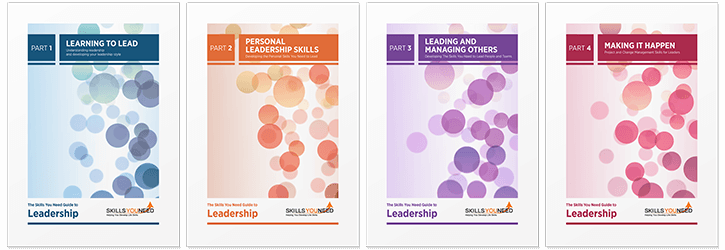Understanding Workforce Intelligence
and Its Impact on Your Business
See also: Transferable Skills
As a workforce intelligence analyst, I understand the importance of using this type of data to inform business decisions. Workforce intelligence (WFI) is a powerful tool for businesses that can provide insights into employee performance, engagement, and satisfaction. When used properly, WFI can have a significant impact on an organization's productivity and bottom line.
In this article, I will discuss the fundamentals of WFI and how it can be leveraged to create a stronger and more successful business.
Workforce intelligence is an analysis of employee data gathered from both internal and external sources. By analyzing this data, businesses can identify trends in key performance indicators such as turnover rate, hiring rate, absenteeism rate, as well as other important metrics.
Additionally, WFI can uncover issues related to employee morale or job satisfaction that could otherwise go unnoticed. With the right tools and strategies in place, organizations can use WFI to make informed decisions that promote organizational development and advancement.
What Is Workforce Intelligence?
Workforce intelligence (WFI) is an invaluable asset to any business. It’s a comprehensive and powerful tool that, with proper use, can give businesses the advantage they need to stay ahead of the competition.
By leveraging WFI, companies can gain insight into their workforce, allowing them to make informed decisions that have far-reaching implications. In other words, WFI is the X-ray vision of the modern business world – it provides a clear view of what’s happening inside an organization.

Through data collection and analysis, WFI gives businesses a comprehensive look at their workforce and its performance. This includes metrics such as employee engagement levels, workforce productivity, customer satisfaction scores, and more.
With this information in hand, leaders can identify areas for improvement and take steps to create a more efficient workplace. Additionally, WFI can be used to monitor changes in the job market and analyze trends across industries.
The impact of WFI on businesses is undeniable; it offers insights that are essential for informed decision-making. With access to this data, leaders can make strategic decisions about personnel and resources that will help them achieve success in their respective fields. From understanding staffing needs to measuring performance outcomes over time – WFI is an indispensable resource for any business looking to stay competitive in today’s market.
Benefits of Workforce Intelligence
Workforce intelligence is an essential tool for effective business management and operational planning. By leveraging data-driven insights, organizations can make better informed decisions about the future of their workforce. But what are the benefits of using this technology?
First and foremost, workforce intelligence helps companies improve their hiring processes. Through deep analytics, employers can identify which applicants have the skill sets to succeed long-term in a particular role. By understanding who is likely to perform well in a role, organizations can increase productivity and reduce staff turnover.
Additionally, workforce intelligence can help businesses get a better sense of their workforce’s strengths and weaknesses. By analyzing employee performance data, managers can gain insights into which departments need more resources or additional training opportunities.
Here are some key advantages of leveraging this technology:
-
Improved decision making: Organizations can make more informed decisions based on facts and data rather than speculation or guesswork.
Reduced costs: Companies can save money by eliminating unnecessary recruitment costs or inefficiently allocated resources.
Enhanced employee engagement: Companies that use advanced analytics to track employee performance will be able to recognize star performers and reward them accordingly.
Increased productivity: Analyzing employee performance data allows organizations to identify any issues quickly and address them before they become larger problems that affect the bottom line.
Ultimately, organizations that leverage workforce intelligence will have an advantage over their competition when it comes to managing their most valuable asset – their employees. With the right tools in place, businesses can create a path for success through improved decision making, cost savings, greater engagement with employees, and increased productivity across all departments.
Collecting and Analyzing Data
Collecting and analyzing data is an integral part of leveraging workforce intelligence to drive decisions in a business. It starts with gathering employee information from sources like surveys, interviews, and performance reviews.
This data must be analyzed to identify important trends and patterns that can help inform decision-making across the organization. Data collection efforts should be tailored to the specific use cases in mind.
For example, if the goal is to better understand how employees are feeling about certain workplace issues, then surveys may be the best option. On the other hand, if the goal is to measure employee performance over time, then performance reviews could provide more valuable insight.
When it comes to analyzing data, there are myriad approaches that can be applied depending on the situation. Statistical methods such as regression analysis can uncover correlations between different variables while text analysis can help reveal sentiment or sentiment shifts over time.
Visualizing data in charts and graphs can also help tell a story and make complex findings easier to interpret. Once meaningful insights have been identified, they can be used to inform decisions and optimize processes within a business for greater success.
Strategies for Improved WFI
Workforce intelligence is an essential component of any successful business. The data collected through WFI can provide a clearer picture of the workforce and how they behave, allowing businesses to make more informed decisions and take proactive steps to improve their performance.
To ensure that your organization is taking full advantage of the power of WFI, it's important to understand the best strategies for maximizing its impact.
One key strategy for improved WFI is focusing on areas where it can have the most impact. This means identifying specific processes, roles, and teams where data-driven decisions are likely to have the greatest effect on employee engagement, productivity, and overall performance.

By gathering insights from these areas first, you will be able to develop a better understanding of the workforce as a whole and use that knowledge to drive change in other areas.
Another strategy for improving WFI is using predictive analytics to anticipate future trends. By analyzing historical data and recognizing patterns in behavior, organizations can gain insight into potential opportunities or threats that may arise in the future and be better prepared to tackle them head-on.
This helps companies stay ahead of the competition by taking action before problems even arise—ultimately resulting in greater efficiency and increased profitability.
All in all, when used correctly, WFI can provide valuable insights into how your business runs and help you make smarter decisions that will benefit everyone involved. With thoughtful strategies like those outlined here, you'll be well on your way towards optimizing your organization's performance through improved workforce intelligence.
Assessing Your Organization's WFI
As the sun rises each morning, so too does the need to assess the impact of workforce intelligence on your business. Just like a warm sunrise brings new light and hope, WFI can be seen as a new dawn in organizational management and productivity. It is essential to understand how WFI can help you to make decisions that will benefit your organization.
When assessing your organization's WFI capabilities, there are several areas of focus. First, consider the level of data-driven decision making that is being used by managers and leaders. Is your organization using data-driven insights to drive key performance indicators? Are managers and employees being empowered with actionable insights from data analytics? Is there an understanding of how WFI can help inform better hiring practices? These are all important questions to ask when evaluating your organization's WFI capacity.
Next, it is important to assess the current state of employee engagement within your organization. Do employees feel connected and engaged with their work or do they feel disconnected from their tasks? Are employees aware of how their contributions are impacting the overall success of the organization? How is feedback being provided on both a team and individual level?
Answering these questions will help you determine if there is room for improvement in terms of leveraging WFI for increased employee engagement.
Finally, consider what resources you have available to deploy in order to capitalize on workforce intelligence opportunities. Do you have access to appropriate technology platforms for collecting and analyzing data? Are your existing systems adequate for delivering insightful data-driven decision-making capabilities? Do you have staff or external partners who specialize in workforce intelligence who can provide support during implementation and beyond?
Taking stock of available resources will enable organizations to more effectively leverage WFI solutions and maximize their impact on business performance.
Incorporating WFI Into Your Business Model
Incorporating workforce intelligence into your business model is essential for success in the modern world. By understanding the behavior of your employees and customers, you can gain insight into how to optimize operations and maximize profitability.
Here are three key ways to incorporate WFI into your business:
Gather data from employees at all levels of the organization about their experience in the workplace.
Analyze customer behavior patterns to better understand their needs and preferences.
Develop a comprehensive strategy for leveraging WFI data to inform decision-making.
By collecting and analyzing data on employee and customer behavior, you can gain valuable insights that will help you make informed decisions about how to optimize operations and maximize profits.
Additionally, by investing in tools that allow you to measure, monitor, and track workforce intelligence metrics, you can ensure that you have actionable data at your fingertips whenever needed. With the right strategies in place, incorporating WFI into your business model can be an incredibly powerful tool for driving growth and success over the long term.
Further Reading from Skills You Need
The Skills You Need Guide to Leadership eBooks
Learn more about the skills you need to be an effective leader.
Our eBooks are ideal for new and experienced leaders and are full of easy-to-follow practical information to help you to develop your leadership skills.
Conclusion
Workforce intelligence has the power to revolutionize corporate strategies and catapult businesses forward. It offers an unprecedented level of insight into employee performance, productivity, and engagement.
Companies who invest in understanding and utilizing WFI will be well-positioned to stay ahead of the competition. With a deeper understanding of their people, organizations can unlock tremendous potential for growth.
Investing in WFI is one of the smartest moves you can make for your business - it's not just an innovation, it's a game changer!
About the Author
Paul Smith is a seasoned technical writer with over 10 years of experience in creating clear, concise, and user-friendly articles. With a passion for technology and a keen eye for detail, Paul has successfully translated complex technical concepts into accessible content for various audiences.


